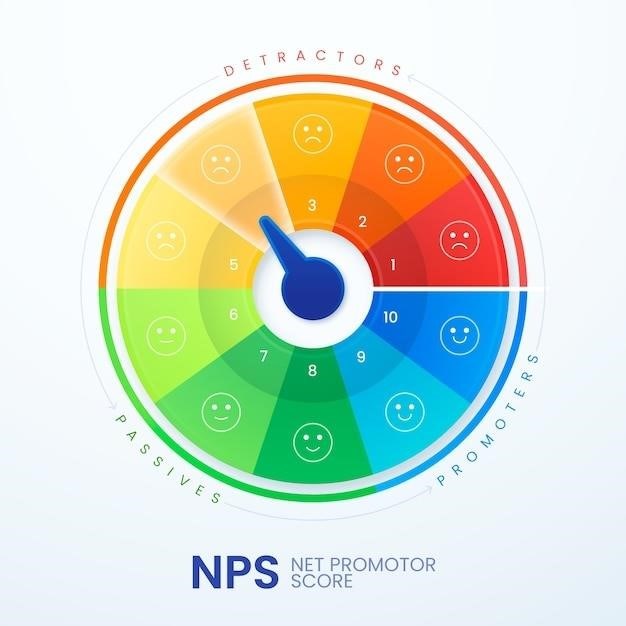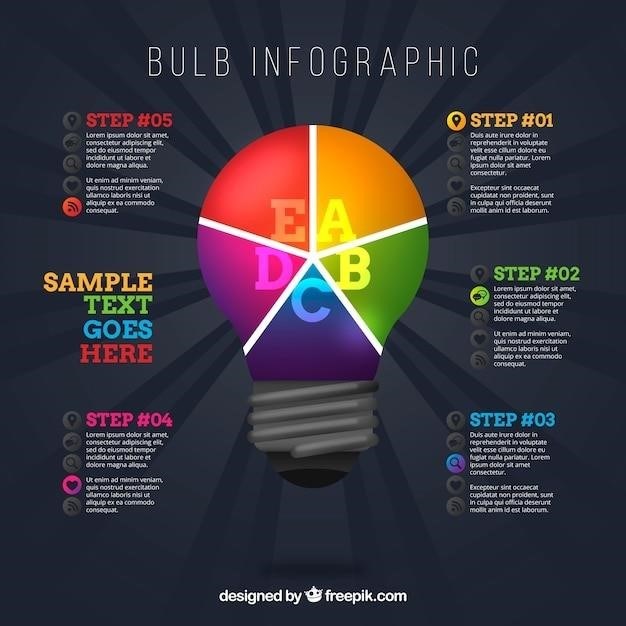Fundamentals of Engineering Study Guide⁚ A Comprehensive Plan
This guide provides a structured approach to FE exam preparation, encompassing exam understanding, resource selection, effective study strategies, mastering core engineering fundamentals, utilizing practice exams, navigating the computer-based testing environment, and exam day strategies. It also covers available study guides, online resources, exam scoring, and addressing common challenges. Success hinges on a well-defined plan.
I. Understanding the FE Exam
The Fundamentals of Engineering (FE) exam is a crucial step for aspiring licensed professional engineers. Administered by NCEES (National Council of Examiners for Engineering and Surveying), it assesses foundational engineering knowledge and problem-solving abilities. Understanding the exam’s format—computer-based testing (CBT)—is key. Familiarize yourself with the NCEES FE Reference Handbook, your permitted resource during the exam. It contains essential formulas and data. Note that specific exam content varies by discipline (e.g., civil, mechanical, electrical). The exam’s structure includes multiple-choice questions testing your grasp of fundamental principles across various engineering disciplines. Knowing the exam’s structure, content, and time constraints is paramount for effective preparation. Research passing rates for your chosen discipline to gauge expectations and understand the level of effort required for success. Successful preparation requires a deep understanding of the exam’s requirements and format.
II. Choosing the Right Study Resources
Selecting appropriate study materials is crucial for FE exam success. The NCEES FE Reference Handbook is your primary resource during the exam, so familiarity is essential. Beyond the handbook, various study guides and review manuals cater to different learning styles and disciplines. Popular options include the PPI FE Review Manual and discipline-specific review books from publishers like Lindeburg, PE. Online resources, such as FE Learning Hub and Eng. Pro Guides, offer practice problems, video lectures, and interactive learning modules. Consider your learning preferences when choosing resources. Some learners benefit from concise review manuals, while others prefer comprehensive textbooks with detailed explanations. Supplement your chosen resources with practice problems to reinforce concepts and assess your progress. Look for resources aligned with the current NCEES exam specifications. Don’t hesitate to explore free online resources and forums to broaden your understanding and find additional support.
III. Effective Study Strategies and Time Management
Effective study strategies are paramount for FE exam success. Develop a realistic study schedule that considers your strengths and weaknesses, allocating more time to challenging topics. Consistent, focused study sessions are more effective than sporadic cramming. Active recall techniques, such as practicing problems and explaining concepts aloud, improve retention. Spaced repetition, revisiting material at increasing intervals, enhances long-term memory. Utilize practice exams to simulate the actual testing environment and identify knowledge gaps. Seek feedback on your performance and adjust your study plan accordingly. Time management is crucial; allocate sufficient time for each subject area based on its weight in the exam. Break down large study tasks into smaller, manageable chunks to avoid feeling overwhelmed. Regular breaks and adequate rest are essential for maintaining focus and preventing burnout. Consider incorporating active learning strategies like flashcards and mind maps to improve understanding and memorization. Consistent effort and strategic study habits are key to achieving your goal.
IV. Mastering Key Engineering Fundamentals
A strong grasp of fundamental engineering principles is essential for FE exam success. This involves a thorough understanding of mathematics, including calculus, differential equations, and linear algebra. Proficiency in physics, encompassing mechanics, thermodynamics, and electricity and magnetism, is also crucial. Chemistry fundamentals, particularly stoichiometry and chemical reactions, are important for certain disciplines. A solid foundation in engineering mechanics, including statics, dynamics, and strength of materials, is necessary. Furthermore, a comprehensive understanding of the principles of thermodynamics, fluid mechanics, and heat transfer is vital. Depending on your chosen discipline, a good understanding of electrical circuits, digital logic, and control systems might also be needed. Mastering these fundamentals requires consistent practice and problem-solving. Use the NCEES FE Reference Handbook as a guide, focusing on the key concepts and formulas relevant to your chosen engineering discipline. Regular practice with problems helps reinforce your understanding and builds confidence.
A. Mathematics and Science Foundations
A robust foundation in mathematics and science is paramount for success on the FE exam. This section emphasizes calculus, including differential and integral calculus, essential for solving engineering problems involving rates of change and accumulation. Linear algebra, particularly matrices and vectors, is crucial for structural analysis and other applications. Differential equations, which model dynamic systems, are frequently encountered in various engineering fields. In physics, a strong grasp of classical mechanics (statics and dynamics), thermodynamics (energy transfer and transformations), and electromagnetism (electrical fields and circuits) is needed. Chemistry fundamentals, including stoichiometry (mass relationships in chemical reactions) and basic chemical principles, are important, especially for chemical and environmental engineering. Understanding the underlying principles and applying them to solve practical problems is key; memorizing formulas alone is insufficient. Thorough review of these core subjects, combined with consistent practice problem-solving, will significantly enhance your performance on the exam.
B. Engineering Disciplines Overview
The FE exam assesses fundamental principles across various engineering disciplines. A broad understanding of these disciplines is crucial, even if your focus is on a specific area. This section emphasizes familiarizing yourself with core concepts in civil, mechanical, electrical, chemical, and industrial engineering. Civil engineering principles include statics, dynamics, fluid mechanics, and structural analysis. Mechanical engineering fundamentals cover thermodynamics, fluid mechanics, and machine design. Electrical engineering basics include circuits, electromagnetism, and signals. Chemical engineering focuses on reaction kinetics, thermodynamics, and transport phenomena. Industrial engineering touches upon operations research, production planning, and quality control. While in-depth knowledge of each discipline isn’t required, a general understanding of their core principles and how they relate to problem-solving is vital. Reviewing introductory textbooks or online resources for each discipline can provide a helpful overview. This broad understanding will allow you to approach unfamiliar problem types with confidence and a systematic approach.
C. Problem-Solving Techniques
Effective problem-solving is paramount for FE exam success. Mastering this skill goes beyond simply knowing formulas; it involves a structured approach. Begin by carefully reading and understanding the problem statement, identifying all given information and unknowns. Draw diagrams to visualize the problem, clarifying relationships between variables. Select appropriate equations based on the problem’s context and the given information. Solve the equations systematically, showing all steps clearly to minimize errors and allow for easy review. Always check your units and ensure they are consistent throughout the calculation. After obtaining a solution, critically evaluate its reasonableness, considering whether the answer aligns with your expectations based on the problem’s context. Practice diverse problem types to build proficiency and familiarity with various solution strategies. Regular practice is key to improving problem-solving skills and developing a methodical approach that can be applied consistently across different problem domains within the exam.
V. Utilizing Practice Exams and Resources
Practice exams are invaluable tools for FE exam preparation. They simulate the actual testing environment, helping you acclimate to the format, time constraints, and question styles. Numerous resources offer practice exams, including online platforms, textbooks, and review manuals. Start with practice exams early in your preparation to identify your strengths and weaknesses. Focus on areas where you struggle, revisiting relevant concepts and practicing similar problem types. Analyze your mistakes thoroughly; understand why you got a question wrong, not just that you got it wrong. This analysis is crucial for targeted improvement. As your preparation progresses, gradually increase the difficulty and intensity of practice exams. Simulate exam-day conditions by timing yourself and minimizing distractions. Consider using a variety of practice exam sources to gain exposure to different question styles and problem types. Remember, consistent practice is essential for building confidence and achieving success on the FE exam.
VI. Navigating the Computer-Based Testing Environment
The FE exam is computer-based, demanding familiarity with the online testing platform. Before the exam, practice using the NCEES online tutorial to understand the interface and functionality. This will help you avoid technical issues during the exam. Become comfortable with the online calculator, ensuring you can efficiently perform calculations within the time constraints. Familiarize yourself with the navigation tools, enabling you to move seamlessly between questions and review your answers. Understand how to mark questions for review and utilize the available tools efficiently. Practice managing your time effectively within the computer-based environment. The online environment may differ from traditional paper-based tests, so practice is key to adapting to the platform. Familiarize yourself with the specific rules and regulations for computer-based testing, including those concerning breaks and restroom use. Proper preparation for the computer-based format will help reduce anxiety and enhance performance on exam day.
VII. Exam Day Preparation and Strategies
Thorough preparation extends beyond studying; it encompasses meticulous exam-day planning. Ensure you have all necessary identification documents and arrive at the testing center well in advance to avoid unnecessary stress. Choose comfortable clothing and bring snacks and drinks to maintain energy and focus throughout the exam. Review key concepts and formulas briefly before the exam, but avoid cramming. Read each question carefully and manage your time effectively. Prioritize questions you find easier to build confidence and allocate time proportionally to their point value. Don’t dwell on difficult questions; move on and return to them if time permits. Utilize the provided scratch paper effectively for calculations and problem-solving. Maintain a positive attitude and focus on your strengths. Remember to double-check your answers before submitting the exam. Post-exam, review your performance, identify areas needing improvement, and plan for future attempts if necessary. Adequate preparation minimizes surprises and maximizes performance on exam day.
VIII. Available Study Guides and Review Manuals
Numerous study guides and review manuals cater to the Fundamentals of Engineering (FE) exam. Popular choices include the PPI FE Review Manual, often praised for its comprehensive coverage and rapid preparation approach. Many discipline-specific guides exist, such as those focusing on mechanical, electrical, or civil engineering. These specialized resources delve into the intricacies of each discipline, providing targeted practice problems and in-depth explanations. Online platforms offer digital versions and supplemental materials, often including practice problems and interactive elements. When selecting a study guide, consider factors such as the author’s reputation, the recency of the edition (to align with the current exam specifications), the format (textbook, online course, etc.), and user reviews. A well-structured guide should logically organize content, include numerous practice problems, and clarify complex concepts. A combination of resources can prove beneficial for a comprehensive preparation strategy.
IX. Online Resources and Communities
The internet offers a wealth of online resources and communities dedicated to FE exam preparation. Numerous websites provide practice problems, interactive simulations mirroring the computer-based testing environment, and access to past exams. These platforms often include forums where aspiring engineers can connect, share study strategies, and discuss challenging concepts. YouTube channels offer video tutorials and lectures covering various FE exam topics; These videos can provide alternative explanations to complex subjects, making learning more accessible. Online study groups, often found through social media platforms or dedicated engineering communities, offer collaborative study environments. Participants can share notes, quiz each other, and provide mutual support throughout the preparation process. However, it’s crucial to critically evaluate the reliability and accuracy of online resources, ensuring they align with the current NCEES exam specifications. Remember that effective use of these online resources requires discipline and a structured approach to avoid information overload.
X. Understanding Exam Scoring and Passing Rates
The FE exam employs a scaled scoring system, not a simple percentage. Your raw score (number of correct answers) is converted to a scaled score, comparing your performance to that of other test-takers. The passing score varies slightly each exam cycle and by discipline, reflecting the difficulty of the questions; NCEES publishes historical first-time pass rates for each discipline, providing a benchmark but not guaranteeing individual success. While these rates offer a general idea of exam difficulty, they shouldn’t discourage you. Focus on thorough preparation rather than solely on statistics. The average pass rate for first-time FE examinees is around 68.3% across all disciplines, but individual performance depends on preparation and aptitude. Understanding the scoring system helps manage expectations and maintain motivation. Remember, consistent study, effective strategies, and the utilization of appropriate resources significantly increase your likelihood of success, regardless of historical pass rates.
XI. Addressing Common Challenges and Mistakes
A frequent challenge is inadequate time management during the exam. Practice exams under timed conditions are crucial to avoid this. Another common mistake is neglecting the NCEES Handbook; thorough familiarity is essential. Many struggle with prioritizing topics, often focusing on areas of comfort rather than weaknesses. A balanced study plan addressing all subjects is vital. Some underestimate the importance of consistent study; cramming is inefficient. Regular, focused study sessions are much more effective. Test anxiety is another significant hurdle; relaxation techniques and simulated exam experiences can help. Finally, many overlook the importance of understanding the exam format and question types. Familiarity with the computer-based testing environment is key. Addressing these common pitfalls with proactive strategies dramatically improves chances of success. Remember, effective preparation is key to overcoming these challenges and maximizing your performance.


